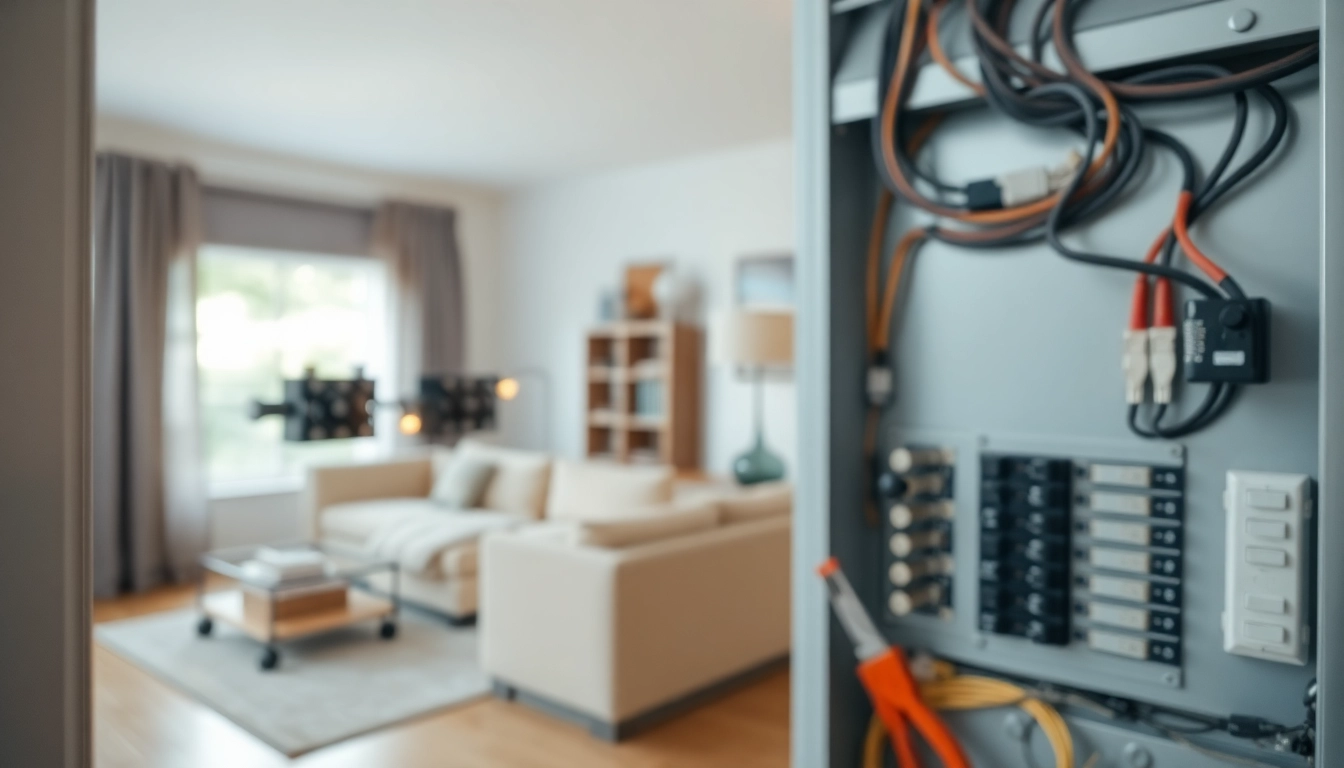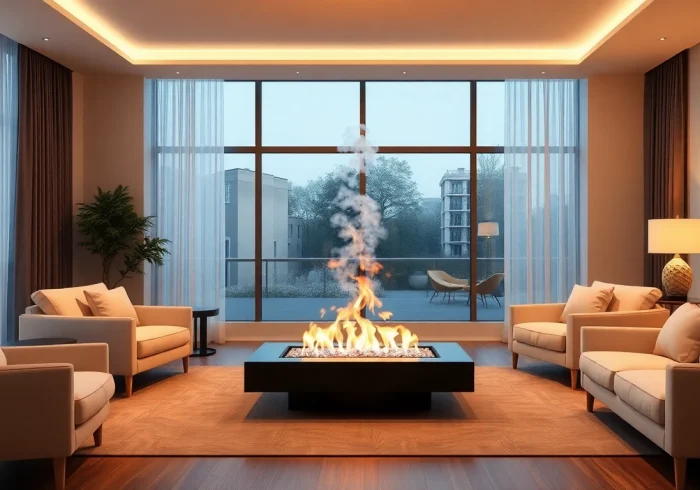Understanding the Electrical Panel
The Electrical Panel serves as the heart of your home’s electrical system, managing the flow of electricity to various appliances and outlets. This essential component ensures that your home operates safely and efficiently, allowing you to harness power for day-to-day activities. In this comprehensive guide, we will explore the intricacies of electrical panels, the signs indicating the need for an upgrade, the benefits of doing so, the steps involved in upgrading, and maintenance tips to keep your panel in top shape.
What is an Electrical Panel?
In simple terms, an electrical panel—commonly referred to as a breaker box or fuse box—is a metal box where all the electrical circuits in a home converge. It receives electrical power from the utility provider and distributes it through various circuits to supply energy to every corner of the home. Electrical panels act as a control center for your home’s electricity, making them crucial in both functionality and safety.
Components of an Electrical Panel
An electrical panel consists of several key components that work collaboratively to ensure safe and efficient power distribution:
- Main Breaker: This is essentially the switch that controls the flow of electricity into your home. It can be turned off to cut power to all circuits, providing a safety measure during repairs or emergencies.
- Circuit Breakers: These are switches that automatically shut off electrical current when faults such as overloads or short circuits are detected. Each circuit breaker serves a specific circuit, protecting wiring and appliances connected to that circuit.
- Bus Bars: These are conductive metal bars that serve as a junction point for multiple wires. The main electrical feed from the utility company connects to the bus bars, distributing electricity to individual circuit breakers.
- Grounding System: An essential safety feature that provides a pathway for excess electricity to safely return to the ground, preventing electric shock and reducing the risk of electrical fires.
- Neutral Bus Bar: This is where the neutral wires from each circuit connect. It serves to complete the electrical circuit by providing a return path for current.
How Electrical Panels Function
Understanding how your electrical panel functions is vital for several reasons, including safety and maintenance. When electricity enters your home, it first passes through the main breaker, which serves as the gatekeeper. From there, it is distributed to various circuit breakers based on the demand for power in different parts of the home.
Each circuit is designed to handle a specific load; for example, lighting circuits typically handle lower loads compared to those supplying appliances like air conditioners or electric stoves. The presence of circuit breakers ensures that in the event of an overload, the breaker will trip, cutting off the connection and protecting both the wiring and connected devices.
Signs Your Electrical Panel Needs an Upgrade
Identifying when it’s time to upgrade your electrical panel is critical for maintaining a safe and efficient electrical system. Here are some common signs indicating that an upgrade may be necessary:
Frequent Circuit Breaker Trips
If you notice that your circuit breakers are tripping frequently—particularly when using common appliances or during peak usage times—this can indicate that your current panel is unable to handle the demand on your electrical system. Frequent trips can not only be frustrating but also signify potential underlying issues that could lead to more significant problems if left unaddressed.
Age of the Electrical Panel
Electrical panels typically last about 25-40 years, but if your panel is showing signs of age (such as rust, corrosion, or wear), it may not be able to keep up with modern electrical demands. An outdated panel can pose safety hazards, including fire risks associated with faulty wiring or malfunctioning breakers.
Increased Electrical Demands
With the advent of numerous electronic devices and appliances, the electrical demands in homes have significantly increased. If you’ve recently renovated your home, added new devices, or are planning to install high-power appliances (like electric vehicle chargers or home theaters), you may need a more robust electrical panel to accommodate these additions.
Benefits of Upgrading Your Electrical Panel
Upgrading your electrical panel can bring numerous benefits, enhancing both safety and functionality within your home.
Improved Safety Features
Modern electrical panels boast advanced safety features that protect against overloads, short circuits, and electrical fires. With GFCI (Ground Fault Circuit Interrupter) and AFCI (Arc Fault Circuit Interrupter) technology, modern panels can better protect sensitive electronic devices and enhance overall home safety.
Enhanced Energy Efficiency
Older electrical panels may not be designed to optimize energy usage, which can lead to higher energy costs. With an upgraded electrical panel, you can take advantage of smart technology and energy-efficient appliances that could save you money in the long run.
Increased Property Value
When prospective buyers see a modern electrical panel in a home, it signifies a well-maintained electrical system, thus increasing the home’s value. Upgrading not only assures buyers of safety but also enhances the overall marketability of the property.
Steps to Upgrade an Electrical Panel
Upgrading your electrical panel is a significant undertaking that requires careful planning and execution. Here are the steps involved in the process:
Assess Your Current Electrical Needs
The first step toward upgrading is to assess your current electrical needs. This involves calculating the total wattage requirement of all appliances and systems in your home, considering any future upgrades or expansions. Working with a licensed electrician may help ensure accuracy in this assessment.
Choose the Right Panel Size
Based on your assessment, determine the appropriate panel size. Most households require either 100 amp, 200 amp, or even larger capacity panels depending on the local electrical codes and demands. Choosing a panel that meets both current and anticipated future needs can help avoid future upgrades, saving you time and money.
Hiring a Qualified Electrician
Electrical work can be complicated and dangerous, so it’s crucial to hire a qualified electrician for the installation. Look for licensed, insured, and experienced professionals who can ensure that the upgrade adheres to all local codes and regulations, minimizing risks and ensuring safety.
Maintenance Tips for Your Electrical Panel
Once you’ve upgraded your electrical panel, it’s essential to maintain it properly. Here are some maintenance tips to ensure longevity and reliability:
Regular Inspections
Schedule regular inspections with a qualified electrician to check for any signs of wear, corrosion, or malfunction within your electrical panel. Inspections can help catch potential issues before they escalate into more serious problems.
Keeping the Area Clean
Ensure that the area around your electrical panel is clean and free of clutter. Obstructions can pose fire hazards and make it difficult to access the panel in case of an emergency. Moreover, ensuring that the panel is dust-free helps prevent overheating.
Identifying and Addressing Issues Early
If you notice any unusual signs, such as flickering lights, buzzing noises, or heat emanating from the panel, address these issues immediately. Ignoring these warning signs can lead to serious safety hazards, including electrical fires or potential damage to your electronic devices.


